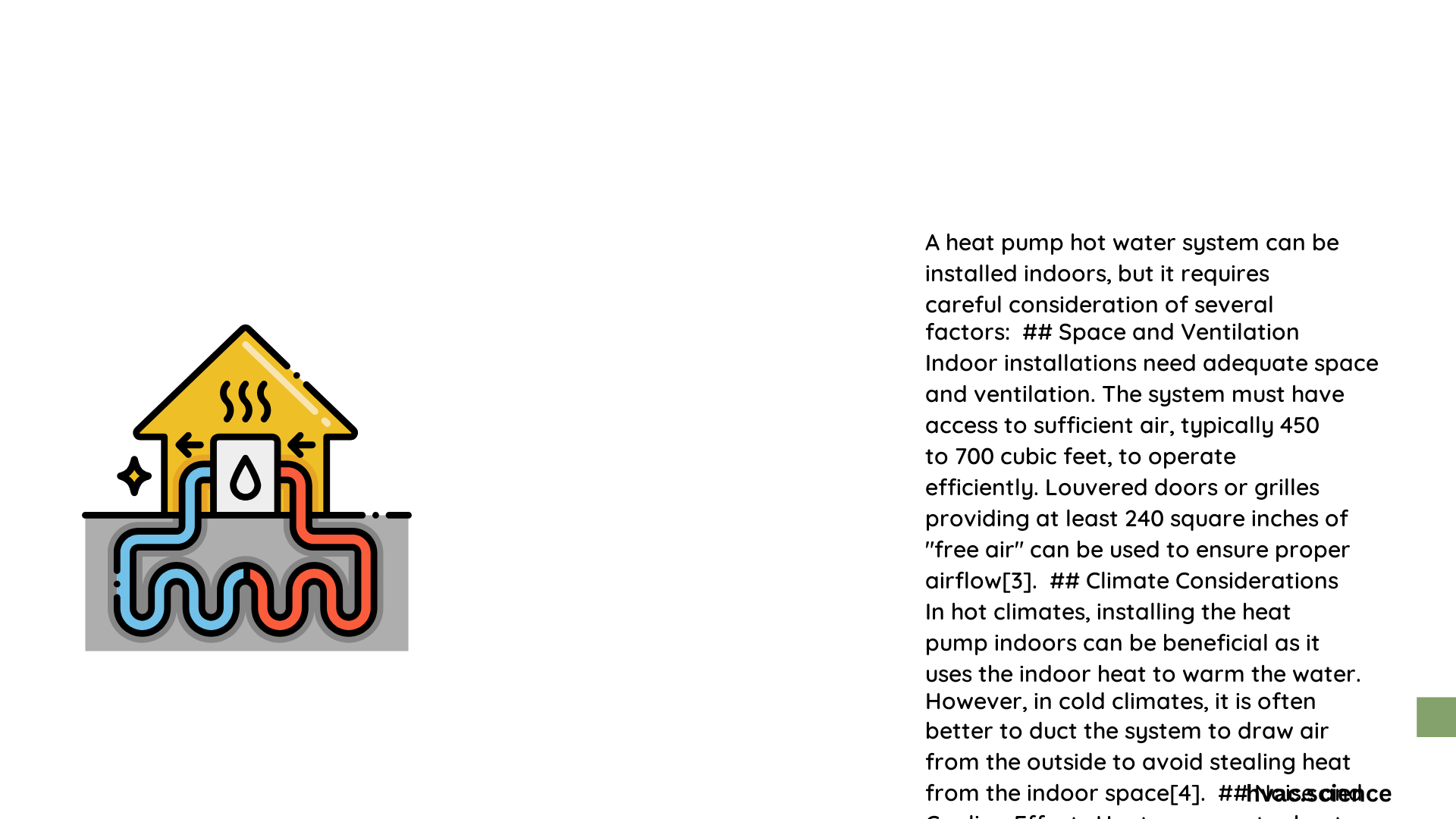Heat pump hot water systems can indeed be installed indoors, but they require specific conditions to operate efficiently. Homeowners must carefully consider space dimensions, ventilation requirements, electrical specifications, and room temperature to ensure optimal performance. This comprehensive guide explores the critical factors that determine successful indoor heat pump water heater installation, helping you make an informed decision about your home’s hot water system.
What Are the Space Requirements for Indoor Heat Pump Water Heaters?
Indoor heat pump water heaters demand substantial air space to function effectively. The key considerations include:
How Much Room Space Is Needed?
- Minimum Air Volume: 700-1,000 cubic feet of free air space
- Typical Room Dimensions:
- 9×9 feet with 9-foot ceilings
- 12×12 feet with 7-foot ceilings
What Ventilation Factors Matter?
| Ventilation Requirement | Specification |
|---|---|
| Intake Air Path | Must be open and unobstructed |
| Exhaust Direction | Away from room center |
| Temperature Range | 40°F to 90°F optimal |
What Electrical and Plumbing Considerations Exist?

Electrical Specifications
- Voltage: Typically 240-volt circuit
- Amperage: 30-amp service recommended
- Electrical Panel: Preferably 200-amp or higher
Plumbing Connection Requirements
- Use flexible piping for cold and hot water connections
- Install check valves to prevent heat loss
- Add drain pan for potential leak protection
- Ensure temperature and pressure relief (TPR) valve compliance
What Are the Benefits of Indoor Heat Pump Water Systems?
Energy Efficiency Advantages
- Efficiency Ratio: 3-4 times more efficient than traditional systems
- Uniform Energy Factor (UEF): Higher rating indicates better performance
- Potential Savings: Thousands of dollars over system lifetime
Environmental Impact
- Reduces energy consumption
- Lowers greenhouse gas emissions
- Provides additional room dehumidification
What Performance Metrics Should You Expect?
Coefficient of Performance (COP)
- Typical COP Range: 3 to 4
- Energy Conversion: 3-4 units of energy produced per electrical unit consumed
Efficiency Factors
- Room temperature stability
- Proper airflow management
- Regular maintenance
- Appropriate installation location
What Potential Challenges Might Arise?
Installation Limitations
- Requires consistent room temperature
- Needs significant unobstructed air space
- May increase cooling load in living spaces
- Potential noise considerations
Recommended Installation Locations
- Utility rooms
- Spacious basements
- Garage with temperature control
- Large mechanical rooms
Conclusion
Indoor heat pump water heater installation is possible with careful planning and adherence to manufacturer specifications. Homeowners should prioritize space, ventilation, electrical capacity, and professional assessment to ensure optimal system performance.
